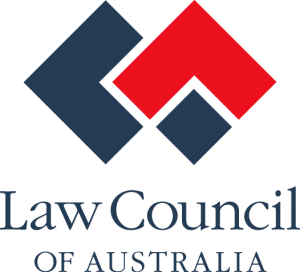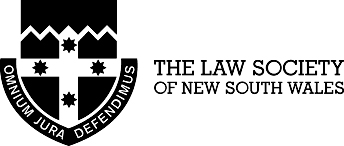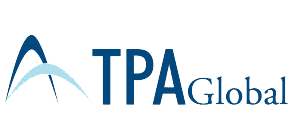- TAX LAWYERS, TAX ADVISORY, TAX COMPLIANCE, EXPATS - SYDNEY, BRISBANE, MELBOURNE, CANBERRA
- 1300 334 518
- admin@waterhouselawyers.com.au
Lessons learnt about how to apply for a Private Ruling
Tax Audit
Lessons learnt about how to apply for a Private Ruling
Private rulings are decisions by the ATO about your particular situation. You can apply to the ATO to tell you, in a Private Ruling, how it will apply the tax law to your situation. If you take actions that are consistent with the Ruling, then the ATO can only tax you in the way outlined in the Ruling.
It can seem easy to apply for a Private Ruling. The ATO have a form that asks you to list your questions, explain the facts and make your argument. The form allows you to lodge this yourself, without needing to see a lawyer or accountant.
However, it’s important to take care when applying for a Private Ruling. This is illustrated in a couple of Administrative Appeals Tribunal (AAT) decisions that came out in early 2016.
In both of these cases, the taxpayers were dragged down a long road of objections and appeals against Private Ruling decisions. This could have been avoided if the application for Private Ruling had been prepared more carefully.
In at least one of these cases, the Private Ruling application was prepared by a well known franchise of tax return preparers. This goes to show that you really need to rely on experts for these applications – not just someone who knows how to prepare a tax return.
TBCL and Commissioner of Taxation [2016] AATA 264 (27 April 2016)
Private Ruling about Taxation of Insurance Payout from Superannuation Scheme
In this case, a young man died at the age of 22. His parents received a life insurance policy payout from his superannuation scheme.
The parents asked for a Private Ruling from the ATO about how tax would apply to the payout.
The parents argued that they were each a ‘death benefits dependant’ of their son. Particularly, they claimed that they had a relationship of interdependency with their son. If this was the case, then the payout would not be subject to income tax.
The ATO’s Private Ruling decision was that the parents were not death benefits dependants of their son. The ATO made this decision based on the facts set out in the Private Ruling application.
The parents objected to the Ruling and the objection was disallowed. The parents then lodged an application for review of the objection decision to the AAT.
In the course of the AAT proceedings the parents introduced additional material in support of their position that they were death benefits dependants.
The AAT said that the ATO had been correct in its decision that the parents were not death benefits dependants, based on the material provided in the Private Ruling application.
The AAT said that it could only make its decision based on the information contained in the Ruling – the parents could not introduce new facts for the AAT to consider.
In the end, the AAT ordered that the matter return to the ATO, so that the ATO could ask the parents to make a further Private Ruling application.
[callout]Lesson to be learnt
The lesson that should be learnt from this case is that it is inefficient to lodge a private ruling application that is not fully considered or does not carefully outline the relevant facts.
In this case, the AAT ordered the Commissioner to request a further application, so the parents will have a chance to have their expanded evidence considered. However, the parents have surely incurred unnecessary expense and endured additional stress by not having originally made a fully considered application.[/callout]
Re Homeowner 1 & Anor and XLPZ and Commissioner of Taxation [2016] AATA 162
Private Ruling about main residence CGT exemption
In this case, the taxpayers, via their tax agents, applied for a Private Ruling and posed the following question:
“Confirm taxpayer is within the limits to claim 6 year exemption rule in relation to capital gain on investment property considering the circumstances”
This question was phrased very badly, and it left the ATO to re-word the question so that it made sense. The ATO reworded the question, as follows:
“Can you choose for section 118-145 of the Income Tax Assessment Act 1997 (ITAA 1997) to apply to treat the property as your main residence from May 2009 for the period it was leased?”
The Ruling decision was ‘no’.
In the ‘Reasons for Decision’, which did not form part of the Ruling, the ATO commented on section 118-135 of the ITAA 1997 and noted that it did not apply to the applicants’ scenario.
The applicants each lodged an objection against the Private Ruling. In those objections, the applicants stated that:
“Insofar as the taxpayers relied upon section 118-145 in addition to section 118-135, that contention concerning section 118-145 is not pressed in this objection.”
That is, the objections effectively abandoned section 118-145 (which appeared to have been the basis of the application for Private Ruling). Instead, the applicants sought now to argue that section 118-135 applied to their circumstances. The objections were disallowed and the applicants applied for a review of the objection decisions by the AAT.
The Tribunal agreed with the ATO that the Tribunal had no jurisdiction to review the Private Ruling so far as it related to the application of section 118-135. This was because that provision was not covered by the Ruling; it had only been mentioned in the Reasons for Decision, which did not form part of the Ruling. The Tribunal said the relevant provision addressed by the Private Ruling was section 118-145, and this was the only provision that it had jurisdiction to consider.
The applications were dismissed for lack of jurisdiction.
[callout]Lesson to be learnt
The lesson here is that it pays to take care when making an application for Private Ruling. Quick or sloppy phrasing, like in this case, can result in an expensive and drawn out process.[/callout]
These are just two examples of how careful you should be when applying for a Private Ruling.
Credentials
Recognition




